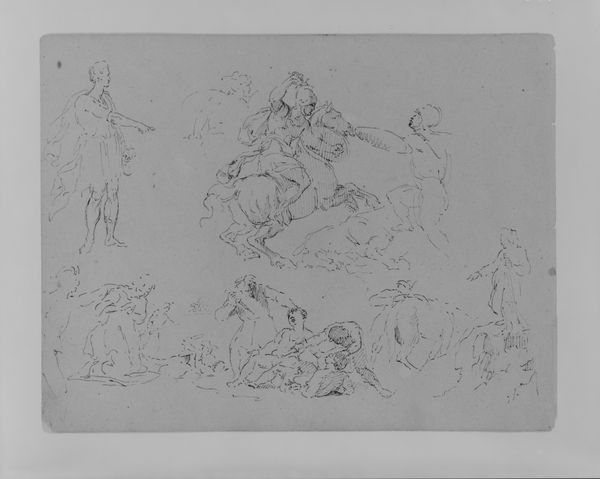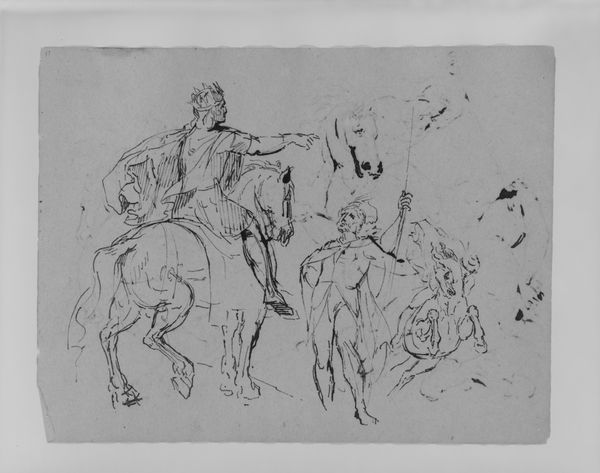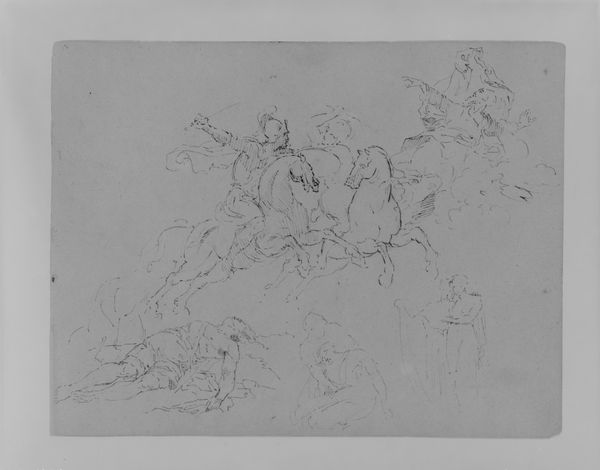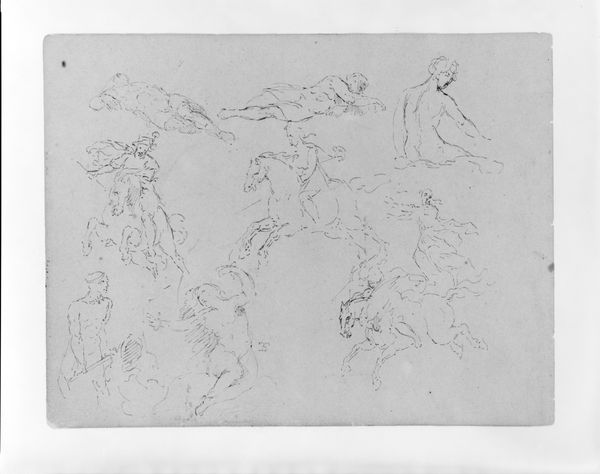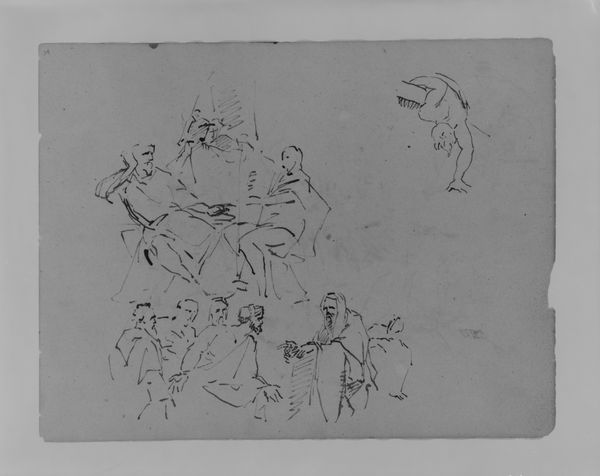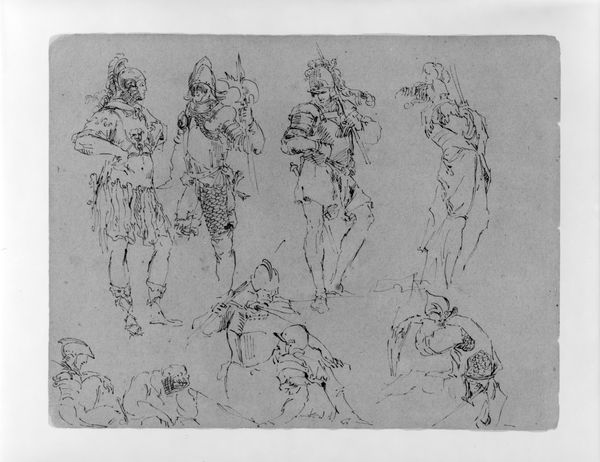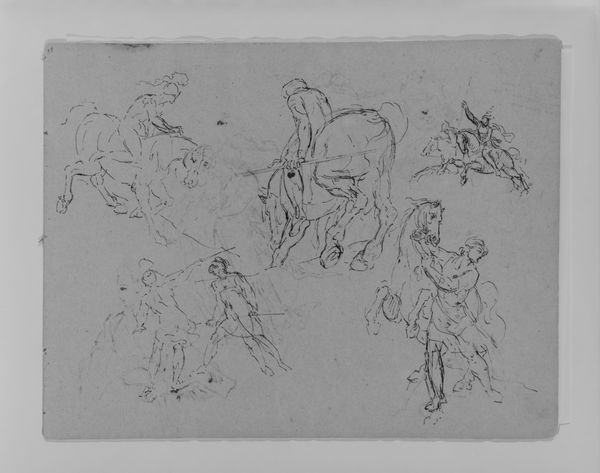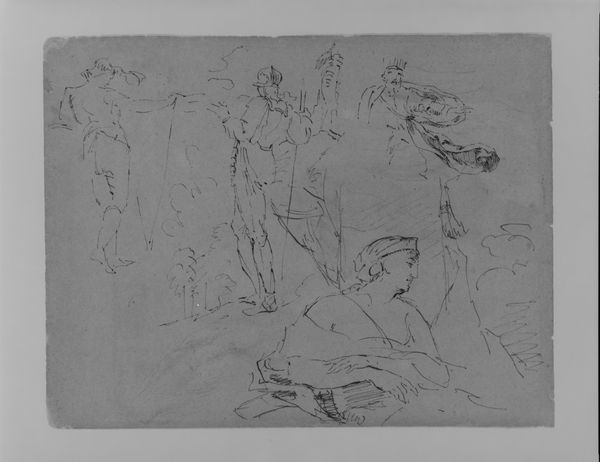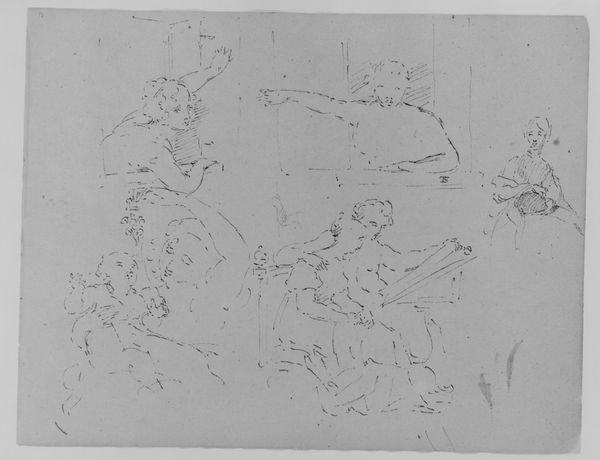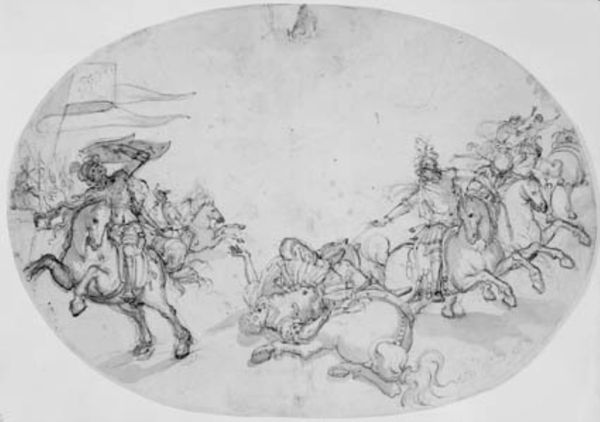
Various Figure Sketches, Including Two Battling Equestrains, Two Wrestlers (from Sketchbook) 1810 - 1820
0:00
0:00
drawing, paper, ink
#
portrait
#
drawing
#
narrative-art
#
landscape
#
figuration
#
paper
#
ink
#
academic-art
Dimensions: 9 x 11 1/2 in. (22.9 x 29.2 cm)
Copyright: Public Domain
Editor: This ink and paper drawing by Thomas Sully, titled "Various Figure Sketches," was made sometime between 1810 and 1820. It's incredibly dynamic! All these figures in motion, especially the battling equestrians, give it a real sense of energy. What strikes you about this piece? Curator: What grabs me is Sully’s use of readily available, and relatively inexpensive, materials like paper and ink to explore complex figural compositions. These sketches weren’t destined for a grand exhibition; they were likely preparatory studies. It makes you consider the labor involved, the sheer practice required to achieve this level of skill. What do you think his access to resources reveals about artistic production at that time? Editor: That's a good point. Thinking about access and labor… paper and ink may have been more accessible than, say, oils, impacting who could even *become* an artist then. I guess it levels the playing field somewhat? Curator: Exactly. And it forces us to reconsider traditional hierarchies within art. Is this "just" a sketch, or does its accessibility and the visible process of its making, challenge our notions of "high art" altogether? How might the social status of the artist impact the perceived value and subsequent interpretation of such work? Editor: I hadn't thought about it that way, but you're right. Focusing on the materials shifts the conversation from just aesthetic appreciation to the conditions of production and access. The artist’s socioeconomic standing likely shaped what they made, and how we view it now. Curator: Precisely! Considering materials helps us look at art as more than just objects of beauty; they become reflections of labor, access, and social structures. Editor: Wow, this completely changes how I'll look at sketches going forward! I will try to think about the materials and labor behind the art. Curator: Me too, thank you. Considering the materials certainly illuminates the larger cultural landscape in which art is made.
Comments
No comments
Be the first to comment and join the conversation on the ultimate creative platform.
